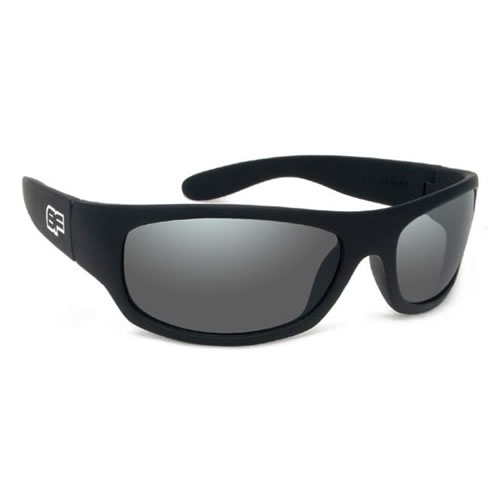Fraser Island
Fantastic Fraser Island
Fraser Island is the worlds largest sand island. It stretches over 123km in length, and is 22km at its widest point. It spans an area of over 180 hectares off the coast of Hervey Bay.
As a world heritage listed land mark, Fraser Island is protected for all to appreciate and enjoy. It is also a precious part of Australias natural and cultural heritage.
With white beaches stretching uninterrupted for miles and over 100 freshwater lakes, Fraser Island is a place of exceptional beauty. Coloured sand cliffs surround the beaches broken by crystal clear creeks.
Fraser Island is the only place in the world where rainforests are found growing on sand dunes. The flora is of particular evolutionary and ecological significance.
Fraser Island hosts some of the longest and most complete age sequence of coastal dune systems in the world and are made up of immense sand blows and cliffs of coloured sands.
They are a continuous record of climatic and sea level changes over the last 700 000 years. The highest dunes on the island reach up to 240 metres above sea level.
Fraser Island's inland areas contain a large number of rare patterned ferns; mangrove colonies; sea-grass beds; and up to 40,000 migratory shorebirds. Rare, vulnerable or endangered species include dugongs, turtles, Illidge's ant-blue butterflies and eastern curlews.
Fraser Island Ferry
The trip started with an approximately 3 hour long drive from Brisbane to Inskip. Here is where you will find two ferry operators working the Inskip-Fraser Island Ferry.
It was time to let the tyres down as they touched the sand at Inskip. This is very important as the sand is rather soft as you head out toward the ferry. We used the time to stretch our legs and look over the side of the boat as we made our way across to Fraser Island.
Once the ferry stopped, the large ramp door opened and we were waved on. The exhillerating feeling as you ride the steep ramp down and finally the touch the sand has to be experienced at least once in a lifetime!
We'd timed the tides perfectly and had a rather wide open stretch of sand highway ahead of us to get to camp.
Fraser Island Camping
There's a multitude of options for camping at Fraser Island. You can choose from the government run DERM camp sites with little to no frills, or there's the more expensive privately run camp sites with fridges / warm running showers or for the better half, there's even log cabins and proper hotels.
We opted to stay at Cathedral Beach approximately on the ocean side of Fraser ISland at the eastern beach close to major beauty spots such as the Coloured Sands. It's a privately run site with fridge facilities and extremely large camp sites.
After setting up camp we decided to decided to spend extra time securing our gear as there was signs of a severe storm brewing overhead.
The next day we headed off to see some of the many places of interest Fraser Island has to offer.
Places To Visit
75 Mile Beach
75 Mile Beach runs along most of the east coast of Fraser Island. While it may not be the best place for swimming due to dangerous currents and plentiful Tiger sharks, it is extremely beautiful and has a number of excellent highlights such as Champagne Pools, Indian Head (from where you can often see the sharks in the surf), the Maheno Wreck and Eli Creek. Eli Creek is strikingly clear and has its own its own unique and varied wild life.
The beach also acts as both a highway and a runway. The hard packed sand below the high tide mark can make for quite smooth driving, but care must be taken with speed; there are many deep wash outs and you can suddenly find yourself driving vertically into one if you're going too fast. Aircraft often land on the beach and if you can afford it, this mode of travel is a great way to see the entire island in a short space of time, with the obligatory beach landing, of course.
Eli Creek
Eli Creek, the largest creek on the eastern beach of Fraser Island, pours up to four million litres of clear, fresh water into the ocean every hour. Eli Creek is a popular picnic and swimming spot, with a boardwalk that follows the creek inland through banksia and pandanus. Swimming or floating down the swiftly flowing creek from the bridge at the far end of the boardwalk is an invigorating experience.
Take care when driving through the creek on the beach, as its fast-flowing water can gouge out deep channels. At high tide it's best to take a break and go for a swim until you can cross the creek at the lower end of the beach.
Maheno Shipwreck
The Maheno, the most famous of the Fraser Island wrecks, was driven ashore just north of Happy Valley during a cyclone in 1935. Once a well-known trans-Tasman liner, the Maheno was bound for a Japanese wrecking yard when she met her stormy end. Today the hull lies slowly deteriorating in the harsh salt environment, about 10 kilometres north of Happy Valley.
Lake McKenzie
There are many different aspects to Fraser Island, but the awe-inspiring beauty of Lake McKenzie makes it probably the most visited natural site on the island. It is a 'perched' lake, which means it contains only rainwater, no groundwater, is not fed by streams and does not flow to the ocean. The sand and organic matter at the base of the lake form an impervious layer, preventing rainwater from draining away.
The sand here is pure, white silica and is not only beautiful to look at but feels beautifully soft to walk on. The sand acts as a filter, giving the water its clarity and helping to make the water so pure it can support very little life. The blues and greens of the lake are endlessly fascinating and it's well worth getting up early to look across it in the soft light of dawn.
There are great camping facilities here, each site having its own camp fire with wood provided. Toilets and cold showers are nearby.
Central Station
Originally established as a forestry camp when there was logging on Fraser Island, Central Station's beautiful rainforest area houses a display explaining the development of the island and its various flora and fauna, an information centre and picnic area. Central Station has a short boardwalk around Wanggoolba Creek and through the rainforest.
The Cathedrals
The Cathedrals on Fraser Island are coloured sand cliffs that have been sculpted by the wind and rain blowing in off the Pacific Ocean. The colours - red, brown, yellow and orange - are spectacular and are best viewed in the early morning light. The size of the cliff faces are a reminder of exactly how large the sand dunes are on Fraser Island.
Fraser Great Sandy National Park
Fraser Island, Great Sandy National Park is a wonderland which can take days to explore. Fraser Island, a World Heritage area, features huge dunes, wide ocean beaches and mighty rainforests growing on sand. Explore the rich cultural history of the Butchulla people and early pioneers.
Walk the 90 kilometre Fraser Island Great Walk - or one of many shorter walks. View the landscape by plane or from many island lookouts. Relax beside a freshwater lake 'perched' among the dunes. Fish from the ocean beach, wander through tall rainforests or marvel at the crystal-clear water in Wanggoolba Creek. Because Fraser Island is all sand, you will need a four wheel drive vehicle with high clearance to enjoy driving the inland tracks or the beach at low tide. Purchase vehicle and camping permits in advance.
Four Wheel Driving
Driving on Fraser Island can be an amazing experience. Miles of open beach with no one else to be seen. As you enjoy the beautiful views and wildlife, it is also important to be aware of the dangers of beach driving.
- Four Wheel Driving on Fraser Island can be dangerous.
- Be mindful of others using the beach.
- Be aware of washouts.
- Be cautious when driving on sand. Car crashes are common on Fraser Island.
- Stick to the signed speed limits. In good conditions, 80km/hr on the beach and 30km/hr on inland tracks.
- Watch out for wildlife.
Recommended Tough Toys
- Tough Tracks
- Tough Tyre Deflators
- Tough Exhaust Air Jack
- Tough Tyre Repair Kit







